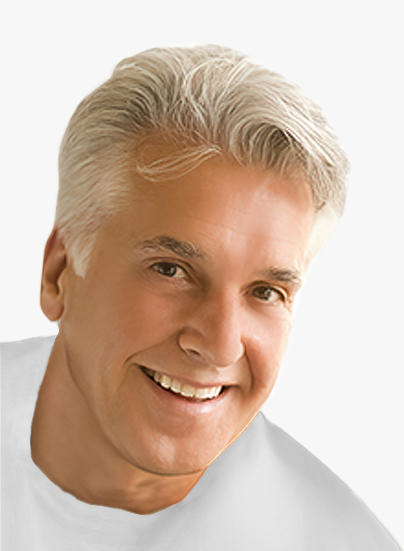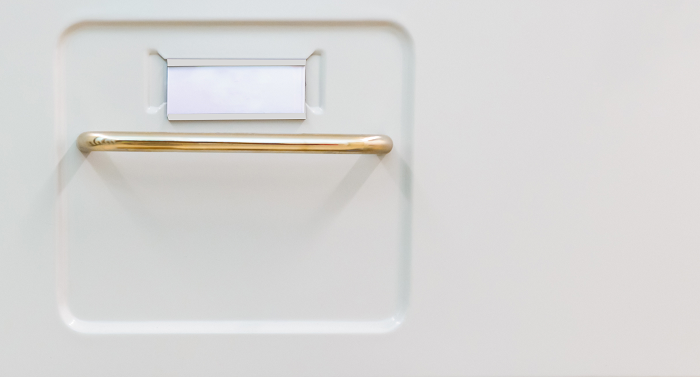book | Immortality, Inc.

— contents —
~ letter
~ about | the book
~ about | the author
~ book excerpts | feat. Ray Kurzweil
~ reading
— letter —
Dear readers,
I’m happy to recommend this new book by best-selling non-fiction author — and my friend — Chip Walter. The book is titled Immortality, Inc. He’s dedicated several years to investigating the global efforts to end human aging + disease. I fully believe in this multi-pronged research that crosses science, technology, policy, ethics, finance, and futurism.
This will be humanity’s next great step forward — the inevitable, necessary evolution of biology. It’s time for society to rise-up against the defeatist concept that disease, aging, and death are part of life. We can’t accept anything less than life-long health + immortality. I believe that today’s steady stream of new knowledge in medicine + physics will join hands with advanced medical tech — to finally win this battle.
This decade will see progress in wide-ranging fields that affect health + life-span:
- genetic engineering + protein studies
- food engineering + agriculture
- ecology + sustainability
- abundance + basic needs
- tele-medicine + robotics
- infectious disease + immunology
The next step on the map to immortality: is to live long enough — stay healthy enough — to get to this fast-approaching time in history when we end aging + disease. Chip Walter’s book is an excellent primer — a tour of the people, places, know-how, and ideas that will conquer death. I hope you’ll be intrigued by his well-researched book.
Below, I’ve included the dictionary’s definition of a watershed moment. I believe we have to look toward to the future, with the understanding that 1,000s of tiny steps in progress can quickly add-up to sudden, tremendous breakthrough — enabling a huge leap for humanity.
I hope you enjoy reading the many excerpts from the book, below.
— Ray Kurzweil

by definition | watershed
wa — ter — shed — noun
— A period in history marking a turning-point in a course of action, in a state of affairs, or in a range of possibility.
— An event marking a unique or important historical change of course, on which important developments depend.
— A tipping-point.
idiom: A watershed moment.
title: Immortality, Inc.
deck: Renegade science, Silicon Valley billions, and the quest to live forever.
author: by Chip Walter
date: 2020
This book is available at fine book-sellers.
Amazon | Barnes + Nobel | Books-a-Million | IndieBound
about | the book
The book Immortality, Inc. — by acclaimed science journalist Chip Walter — explores today’s scientific pursuit of immortality with exclusive visits inside labs. Plus in-depth interviews with visionaries who believe we’ll soon crack the aging process + cure death.
Billionaires are betting their fortunes on advances to prove aging is unnecessary + death is a disability that can be cured. Researchers are delving into the mysteries of biology to keep those processes from happening. The author weaves-in fascinating conversations about the future of humanity.
The book interviews notable anti-aging champions.
- molecular biologist — Arthur Levinson PhD
- genomics entrepreneur — Craig Venter PhD
- pioneering futurist — Ray Kurzweil
- cellular expert — Robert Hariri PhD, MD

about | the author
Chip Walter is a best-selling non-fiction author, journalist, and documentary film-maker. He’s also a National Geographic fellow and former bureau chief at CNN.
He’s written 5 mainstream non-fiction books on science + nature — available at all fine book-sellers.
name: Chip Walter
bio: non-fiction author + journalist
web: home ~ books ~ channel
image | above
A portrait of Chip Walter.
an EXCERPT
from the book
section: epilogue
1. |
Any problem can be solved.
Ray Kurzweil is an inventor, entrepreneur, futurist, author — and a director of engineering at Google. I was sitting with Ray one afternoon when I asked him how he felt about the passage of time — and the idea of running out of it.
He didn’t like to talk about it, but in year 2008 he made a pilgrimage to the hospital to have his mitral heart valve repaired. It was a life-long, genetic shortcoming — and it needed to be taken care of. A leaky heart valve is never a recipe for immortality.
The procedure didn’t require new valves from pigs, only some suturing. So when I brought up the question of mortality, he just grinned. He said: ‘I worry about that a lot less, now that I know I’m not going to die.’
And why should he think otherwise? The ‘bridges’ were advancing, nano-tech was evolving, and artificially intelligent algorithms were undoing the mysteries of humanity’s demise every day. For Kurzweil it was only a matter of time, and time’s acceleration.
After all these years, he had accomplished the promise he’d made during his childhood. He changed the world — with his inventions and his ideas. Others may have explored the notion of living forever, but no one has driven the message into the mainstream with his fervor.
And no one hammers away harder at the importance of exponential growth than Kurzweil — science driven by the irresistible fusion of human + artificial intelligence. Kurzweil believes that any problem can be solved. Even the problem that — so far — has killed every living thing on Earth.

an EXCERPT
from the book
chapter: no. 26
title: The seed of the singularity.
1. |
The science to solve aging.
If the science necessary to solve aging was going to go anywhere, one last remarkable and ironic piece of the longevity puzzle would have to fall into place. Smart machines would need to arise in defense of the human race. Already machine learning was embedding itself in the medical arts, and digital technology had long ago become science’s handmaiden. Craig Venter’s work with the Human Genome Project had marked a milestone. But now — as the search for immortality deepened — much more digital muscle would be necessary.
Art Levinson himself had put the facts concisely: When it came to flipping the genetic switches needed to evade aging, there was no way any human at a lab bench — no matter how gifted, how insightful, or how hardworking — could possibly locate and comprehend their magical pathways. And without that, curing the Ultimate Problem was simply not going to happen.
Homo sapiens required a tool that was faster, smarter, and more tireless than humans themselves. The kind that Riccardo Sabatini used in the Face Project made a good example. ‘Machine learning’ was one term that Sabatini and other computer scientists used to describe this brand of work. But there was another more common name that nearly everyone had heard of — artificial intelligence (AI).
AI is different from other forms of computer code. It consists of legions of algorithms that are eerily similar to the human mind itself. AI can learn to solve problems without being explicitly told what to do ahead of time. It can — in some ways — think for itself, at high speed. It’s the stuff of countless dystopian futures. Ironic, then, that such capabilities should now emerge as our saviors.
It’s doubly ironic that those same tools have been the source of so much of Silicon Valley’s wealth. It’s almost as if evolution had anointed the Valley — with all its computing power and money — as the chosen instrument for immunizing death. In the machines and their algorithms, this created a symbiosis: digits, molecules, biology, tech — coming together in a strange and unexpected harmony.
2. |
Intelligent machines can solve problems.
Ray Kurzweil could have told you this was going to happen. More than 50 years ago, when he was 14 years old, he wrote a paper that outlined how a machine might somehow become as intelligent as a human. He hadn’t divined a direct connection between artificial intelligence and longevity just yet, but he always fervently believed that truly intelligent machines could solve nearly any problem.
The essentials of that thinking hadn’t really changed since Kurzweil’s paper. In fact, he used much of it as the basis for his best-selling 2012 book How to Create a Mind. The book argued that human-level intelligence could be created in computers by reverse-engineering the human brain. Figure out how the neo-cortex worked, employ pioneering software and hardware to do the same in a computer — and voilà — a fully human-like but entirely artificial machine.
Just after the book came out, Larry Page suggested that Kurzweil join Google to “bring natural language understanding” to the company — figure out how computers might someday talk and communicate like humans. Initially Kurzweil only planned to ask Page if Google — or Bill Maris at Google Ventures — might like to invest in the business he wanted to create based on the book. Instead, Page said just come into the Google fold.
This way, Kurzweil could work with the canny computer scientists at Google and tap into its bountiful digital resources — not to mention free office space and all the hardware and software cycles a big thinker could ask for. So in December 2012, Kurzweil — for the first time in his life — joined a company that didn’t have his own name on the corporate logo. But that was ok. The dream of creating something as remarkable as a virtual mind — the holy grail of AI — was deep in the man’s DNA. If he had to become an employee to solve the world’s problems, including death, he could live with that.
The team’s first endeavor under Kurzweil’s tutelage as a director of engineering was to create machine-learning algorithms that could understand users’ e-mails — and then provide short, but sensible answers, all on their own. After 5 years of work with a group of 35 scientists, team Kurzweil created its first Google product: Smart Reply.
Launched in 2017, the initial version listened to the e-mail you received, and then Smart Reply provided 3 possible answers — short responses like “Let’s do Monday.” Smart Reply wasn’t going to solve aging — not immediately.
But in Kurzweil’s view, it made a good first example of artificially intelligent software comprehending a human thought and then providing a response that made sense. On the surface, it might appear trivial, but it really wasn’t. And in the end it would lead to life everlasting. How?
Building on Smart Reply, Kurzweil planned to ratchet-up his project to the point where machines could — on the fly and in context — speak as fluently in any language as he could. The new version would be able to pull all the right words, in all the right order, out of thin air — and carry on an entirely sensible, human-like conversation.
Once that was possible, he figured the machines would be pretty much as smart as we are — which also made them the seed of the singularity he felt would arrive in the mid-21st century.
3. |
A more powerful version of the human body + mind.
The seminal concept behind Ray Kurzweil’s work was something he called “intelligent pattern recognizers” — layers and layers of them that reside in the brain. In his view, these modules are what made the Homo sapiens neo-cortex — the most recently evolved sector of the human brain — such a ringing success. Kurzweil estimated the cerebral cortex houses about 300 million of them, each consisting of clusters of neurons.
Placed in context, he held that these modules rapidly bootstrap simple concepts in an increasingly complex human hierarchy that — layer-by-layer — deliver remarkable insights like art, math, and language. The modules manage this by quickly identifying a few low-level cues, then sensibly pulling in more modules — to generate still more bootstrapped knowledge.
For example, a module that sees the visual image of a horizontal bar, and then sees 2 sides of a pyramid would — in the context of a sentence — immediately recognize it as letter A. Other related modules would see additional letters related to A, to piece together the word ‘apple’ — rather than “pear.”
More modules would attach additional words and then tastes: maybe the smell of pies, memories, a location that the modules then figure out is a kitchen — until the next thing you know, you’re craving a piece of your grandmother’s apple pie. This might trigger other thoughts, feelings, memories, and insights. All of this happens in a blink — powered by the brain’s 100 billion inter-connected neurons.
This might seem a simple example, and a long way from Shakespeare’s: “Tomorrow and tomorrow and tomorrow — creeps in this petty pace from day to day” — a line from his classic play Macbeth. But the point was that this network of inter-woven, highly flexible modules was the wellspring of human intelligence. And Kurzweil’s goal was to develop the artificially intelligent software that would reverse-engineer this unique human trait. If such an advance were possible, it might not be immediately obvious how AI would lead to immortality.
But to Kurzweil, it was all of a piece. With the advent of AI, he foresaw the evolution of a newer, more powerful version of the human body + mind. One that wasn’t strictly biological, but instead employed nano-tech — cell-size nano-bots that could clean arteries, strengthen muscle, and boost organs. While simultaneously allowing the brains of mere mortals to access the vast cerebral spaces of the cloud.
But not in the way we do now, with clunky phones and iPads from Apple — instead with invisible, cell-size machines injected like serums into the cerebral cortex. Essentially becoming enhanced, artificial brain cells — something I found myself calling neuro-bots.
4. |
Physically invincible, augmented people.
Ray Kurzweil predicts that within decades millions of people will be physically invincible, supplied with trillions of neuro-bots capable of linking directly to the ubiquitous cloud. Anyone thus augmented will not require stem cell rejuvenation, or even revamped genetics. They wouldn’t need to ask Google questions — the answer would simply be there, available like every other memory. The average human would not watch a movie. She’d be immersed, imagining it more completely than our own recollections currently do.
One would not hum a song. The music would come into the mind, full-blown, in the highest possible fidelity. In a blink, neuro-bots will even be able to shift your reality from wherever your body is currently located into any other place you might like: Kathmandu in Nepal, ancient Rome, or a beach in the Seychelles. Complete with warm sun and crystal clear water lapping your toes, every sensation as real as real. It wouldn’t be real, but it would feel that way — thanks to a seamless, sensory melding of the neuro-bots re-arranging the chemistry in your brain.
Best of all, this new human hybrid could be digitally backed-up and then downloaded — to create a cloned copy containing all of the information in your mind + body. So that even if your “self” suddenly died, you’d have a perfect back-up available to resume life, as if nothing at all had happened. True immortality that would, once and for all, absolutely obliterate Gompertz’s beta.
Kurzweil considered this a 4th and final bridge. With it, his ultimate view of everlasting life would at last emerge at a time + place that didn’t simply upgrade old-fashioned biology — the kind Calico and Human Longevity were working on — but upgraded it with nano-tech that made you immortal and incredibly intelligent, almost god-like.
Of course, Kurzweil would never use the term god-like. To him, entwining humans and machines so thoroughly that they became indistinguishable was simply the next natural course of human evolution.
One might feel that Kurzweil’s bridge 4 thinking was just a touch outside the views of the average Homo sapiens. Some, however, felt it was a very real threat. Elon Musk and — prior to his death in 2018 — Stephen Hawking had warned that super-intelligent AIs could take over the planet. Partly thanks to the work Musk’s friend Larry Page was supporting. Musk said in July 2017: “I have exposure to very cutting-edge AI. And I think people should be really concerned about it.”
Hawking had written in an open letter with Musk — and a few dozen AI experts — that the emergence of AI would lead to creatures so smart and swift they’d leave us looking like the cerebral equivalent of an amoeba. He said it could become the “worst event in the history of our civilization.”
Remarks like these aggravated the Kurzweilian brain. More and more, he grew peevish with media cries that repeatedly told the world that in no time we’d all be living in a dystopian future where our overlords transformed Siri into a menacing version of George Orwell’s novel 1984. But look how tech had advanced the human race.
Despite the horrors of the last century, the rate of death caused by war over the past 600 years had dropped several hundred fold. Murder rates were rapidly declining. FBI statistics showed that — between years 1993 to 2015 — the US murder rate had plummeted 50%. The same was true of property crime. Despite media reports of our collective demise, Kurzweil believed the world was a better, safer, happier, and smarter place — thanks to the advances that the keepers of science and innovation made possible.
For Kurzweil, the smart thing was to let tech march ahead — Tom Swift style — because that was where we were headed. Yes, one had to be vigilant and control the power of smart machines. He had been saying that for years. But no need to hit the panic button.
Machines wouldn’t match human intelligence for another 10 years, and the singularity itself wouldn’t arrive until year 2045 — a date with destiny that he planned to keep, when he celebrated his 97th birthday. The best approach would be to put safety measures into place along the lines of 3 laws of robotics by Isaac Asimov.
Like the first stone knives, created over 2 million years ago, all tech could be used for good or ill. But if properly managed, AI would surely be our saviors, not our terminators — our partners, not our competitors. Just watch: AI was going to save our skins. Kurzweil could see it. Levinson and Venter saw it too, each in their own way. There could be no doubt that smart machines was where the end of The End lay.
— end —

reading
Set of best-selling science books by author Chip Walter.
1. |
title: Last Ape Standing
deck: The 7-million-tear story of how we survived.
author: by Chip Walter
date: 2013
explore this book | click
2. |
title: Thumbs, Toes, and Tears
deck: And other traits that make us human.
author: by Chip Walter
date: 2006
explore this book | click
3. |
title: I’m Working on That
deck: A trek from science fiction to science fact.
author: by Chip Walter + William Shatner
date: 2002
explore this book | click

— notes —
AI = artificial intelligence
CNN = Cable News Network
DNA = deoxy-ribo-nucleic acid
FBI = the Federal Bureau of Investigation | US
HLI = Human Longevity, Inc.
